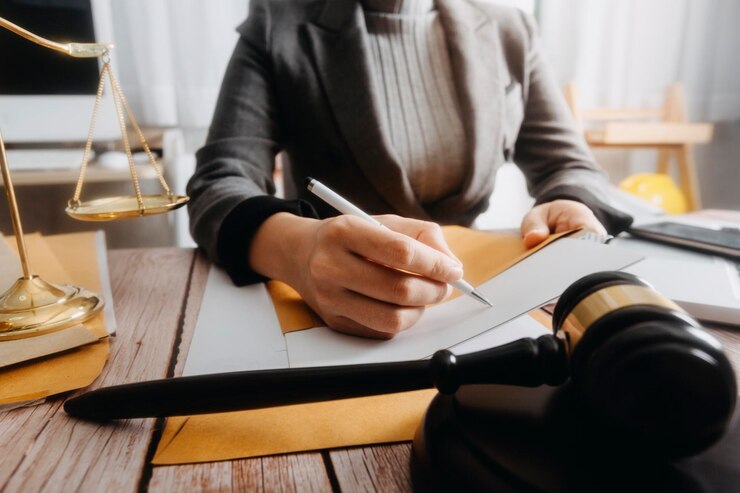
Table Of Contents
- The Digital Landscape: Navigating Copyright Law
- The Complex Interplay: Legal Translation and Copyright Infringement
- The Human Touch: Ensuring Accuracy and Nuance
- Preserving Intent and Context: Bridging Language and Law
- Cultural Sensitivity: Navigating Diverse Legal Landscapes
- The Collaborative Approach: Human Expertise and Technological Tools
- Navigating Future Frontiers: Challenges and Prospects
- Conclusion
Balancing Tradition And Innovation: How Human Legal Translation Safeguards Against Copyright Infringement
Copyright law is the bedrock for safeguarding creators’ intellectual property rights, ensuring their original works are protected from unauthorized use.
At its core, copyright law grants creators exclusive rights to their creations, encompassing control over their creative works’ reproduction, distribution, adaptation, and public display. In an era defined by the rapid exchange of information and the digitization of creative works, these principles of copyright law have never been more crucial.
In today’s digital age, where information transcends geographical boundaries in seconds, the principles of copyright protection face new challenges. The delicate equilibrium between preserving long-standing traditions and embracing technological innovations becomes pivotal in maintaining the integrity of copyrighted works.
This article will delve into the intricate world of copyright law, exploring the vital role that human legal translation plays in preserving the integrity of copyrighted works and preventing potential copyright infringement.
The Digital Landscape: Navigating Copyright Law
The intricacies of copyright law have taken center stage, presenting challenges and opportunities for creators, consumers, and platforms alike. As content dissemination becomes effortless and global, understanding the nuances of copyright has grown paramount.
Striking a balance between protecting intellectual property and fostering innovation has become complex. From user-generated content to digital licensing, the digital era demands reevaluating traditional copyright frameworks.
With the rapid emergence of technologies like AI-generated works, and decentralized platforms, legal experts, content creators, and technology developers must collaborate to ensure a fair, adaptive, and harmonious copyright ecosystem that safeguards creators’ rights while embracing the democratizing nature of the online world.
The Complex Interplay: Legal Translation and Copyright Infringement
The complex connection between legal translation and copyright infringement arises from the difficulties posed by inaccurate translations. While automated machine translation tools have made significant strides, they often struggle to capture the nuances of legal terminology, cultural context, and the intricate tapestry of local laws.
As content traverses linguistic and cultural boundaries, these tools may inadvertently generate translations that distort the intended meaning or alter the legal implications of the original text, potentially leading to copyright infringements.
The Human Touch: Ensuring Accuracy and Nuance
Human legal translators provide an essential layer of expertise that automated tools cannot replicate. Beyond linguistic conversion, these professionals possess an in-depth understanding of legal concepts, cultural contexts, and the intended message of the original material.
Through careful selection of words, precise usage of legal terminology, and a comprehensive grasp of the subject matter, human translators mitigate the risk of copyright infringements from misunderstandings or misinterpretations. This human touch guarantees that the translated content remains aligned with the creator’s original intent.
Preserving Intent and Context: Bridging Language and Law

At the heart of accurate legal translation lies the preservation of the original content’s intent and context. Legal documents frequently incorporate specialized terminology that may vary significantly between languages. Human legal translators are uniquely equipped to navigate these intricacies.
Their expertise ensures not only the accurate translation of terms but also the preservation of the original purpose and context. By safeguarding the authentic representation of the work, human translators play a critical role in reducing the likelihood of misinterpretations that could lead to copyright disputes.
Cultural Sensitivity: Navigating Diverse Legal Landscapes
Copyright laws and legal systems differ substantially across jurisdictions, creating a complex tapestry for copyright protection. Concepts with specific legal meanings in one country may lack direct equivalents in another. Herein lies the significance of human legal translators, who bring heightened awareness of cultural intricacies.
This cultural sensitivity enables them to navigate nuances and variations adeptly. By ensuring that translated content aligns harmoniously with the legal framework of the target jurisdiction, human translators play an instrumental role in averting inadvertent copyright breaches arising from inaccuracies in translation.
The Collaborative Approach: Human Expertise and Technological Tools
Rather than setting technology against human proficiency, a collaborative approach offers optimal results in legal translation. Automated machine translation tools offer speed and efficiency, yet they lack the nuanced comprehension and contextual acumen that human translators possess.
A synergistic strategy entails employing machine translation for an initial draft and refining the output through human review. This integration capitalizes on both efficiency and precision, ensuring that the translated content adheres to the stringent standards required for accurate legal representation.
Navigating Future Frontiers: Challenges and Prospects
As the digital landscape continues to evolve, so do the challenges associated with copyright protection and legal translation. Rapid technological advancements introduce novel complexities that call for adaptable solutions.
Legal professionals and translators must remain vigilant in staying abreast of emerging trends, such as the impact of artificial intelligence on translation accuracy and copyright enforcement. The collaborative relationship between human expertise and technological tools will undoubtedly shape the future of legal translation and its role in safeguarding against copyright infringements.
Conclusion
Human legal translation emerges as a steadfast guardian of copyright protection in the ongoing endeavor to balance tradition and innovation. As technology advances, human translators provide an indispensable layer of accuracy and comprehension, shielding copyrighted works from potential infringements rooted in inadequate translations.
Recognizing the symbiotic relationship between technological tools and human expertise in the evolving digital era remains pivotal in safeguarding copyright protection in an interconnected and diverse world. By harnessing the power of human translation in conjunction with cutting-edge technologies, the legal community can confidently navigate the challenges posed by copyright law, ensuring that the essence of creative works remains untainted across linguistic and cultural borders.
Read Also:









